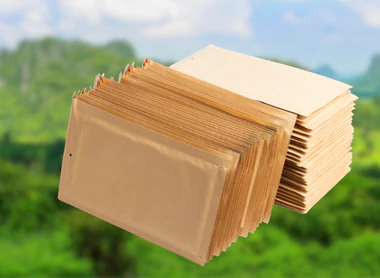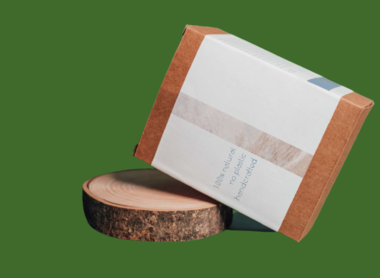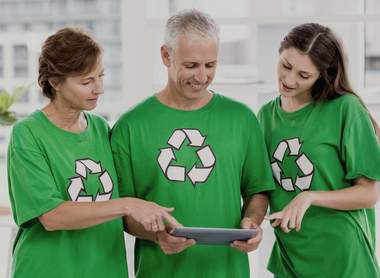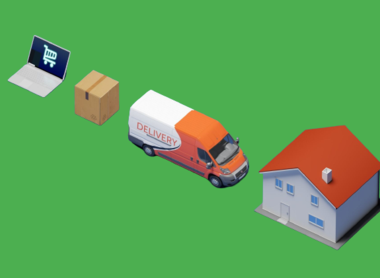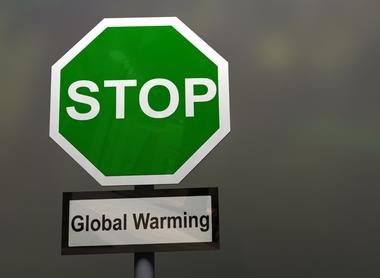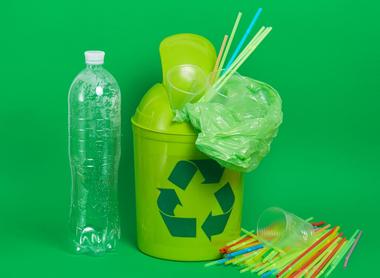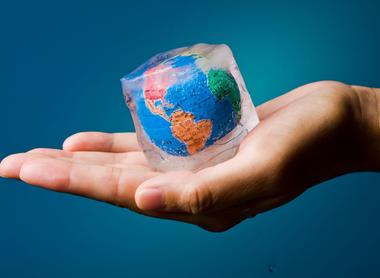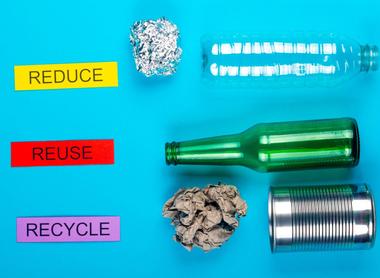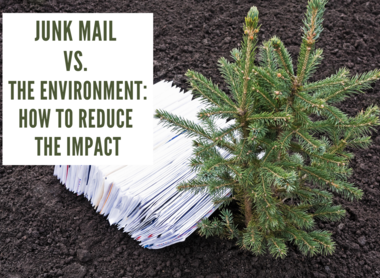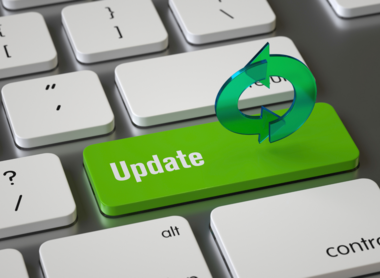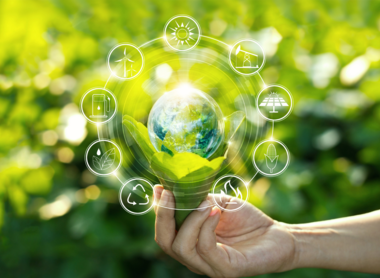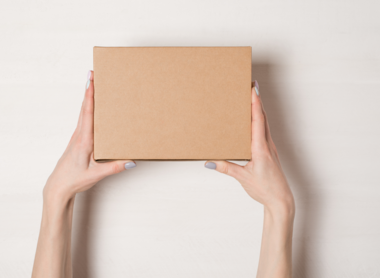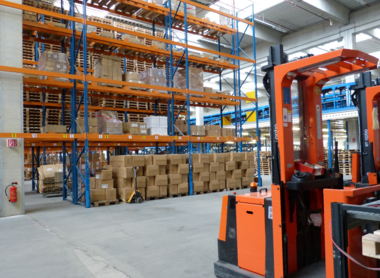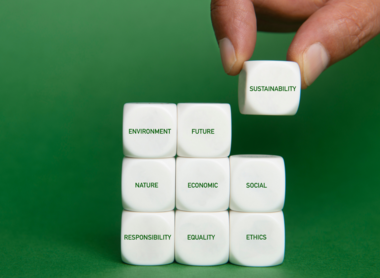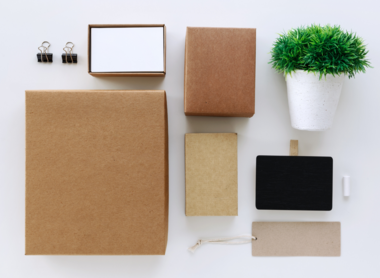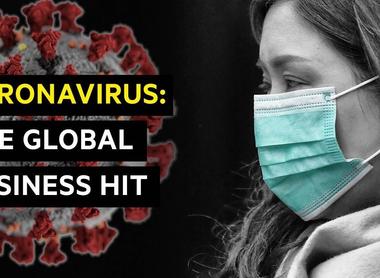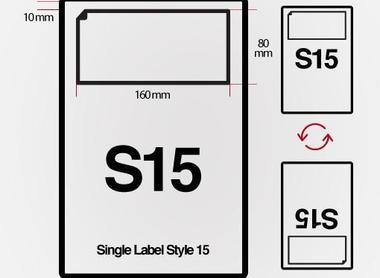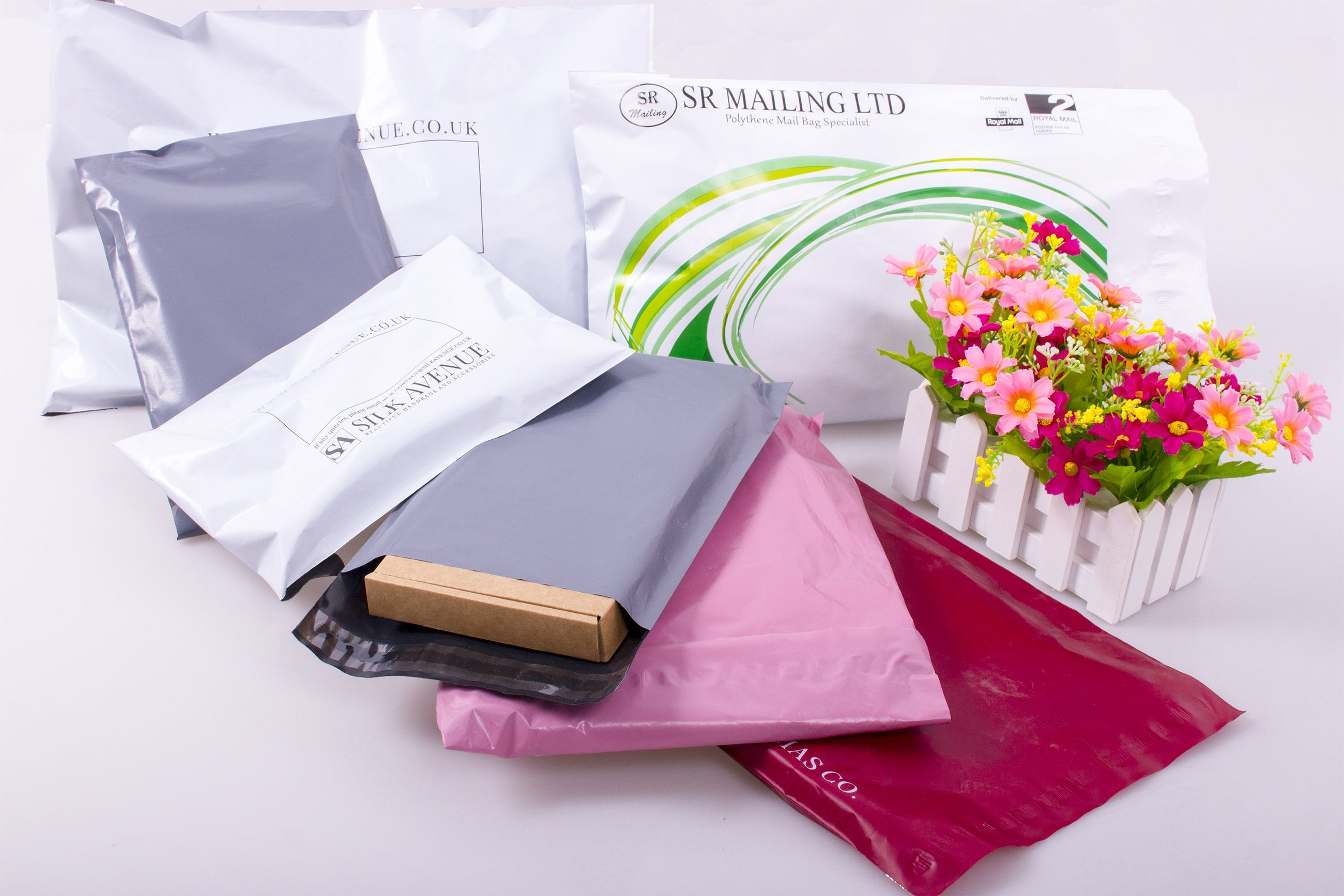What Is the Great Pacific Ocean Garbage Patch?
If you aren’t quite sure what the Great Pacific Ocean Garbage Patch actually is – well, it is an area of the Pacific Ocean where a huge amount of garbage has gathered, and is estimated to cover a surface area of 1.6 million square kilometres, which is around three times the size of France.

Pacific Ocean Facts and Statistics
The Pacific Ocean is really quite an astonishing place, and to put some of the information about the Great Pacific Ocean Garbage Patch into context, there are a few things to know:
- The Pacific Ocean is between the American continent, the Asian and Australian continents
- The surface area of the Pacific Ocean is 165.2 million km²
- The Pacific Ocean covers more than 30% of the Earth’s surface
- The area that the Pacific Ocean covers is actually larger than all the land on the Earth
- The deepest area in the world, the Mariana Trench is in the western north Pacific and is 10,928 meters deep (35,853 feet)
- The Pacific Ocean is also home to the Great Barrier Reef, which is more than 1,429 miles long
- The Pacific Ocean is getting smaller – tectonic plate movement means that it shrinks by an inch each year
- 75% of the volcanoes on Earth are in a ring around the Pacific Ocean basin – this is known as the ring of fire
- Temperatures recorded in the Pacific Ocean range from -2°C to 30°C, colder nearer the poles and warmer nearer the equator
- There are more than 25,000 islands in the Pacific Ocean, with 17,508 belonging to Indonesia alone
Who Discovered The Great Pacific Ocean Garbage Patch?
There was initially a paper published in 1988 that referenced neustonic plastic in the North Pacific Gyre. Captain Charles Moore first alerted oceanographers of the Great Pacific Garbage Patch when he was travelling back from the Transpacific Yacht Race in 1997.
“Yet as I gazed from the deck at the surface of what ought to have been a pristine ocean, I was confronted, as far as the eye could see, with the sight of plastic.”
“It seemed unbelievable, but I never found a clear spot. In the week it took to cross the subtropical high, no matter what time of day I looked, plastic debris was floating everywhere: bottles, bottle caps, wrappers, fragments. Months later, after I discussed what I had seen with the oceanographer Curtis Ebbesmeyer, perhaps the world's leading expert on flotsam, he began referring to the area as the ‘eastern garbage patch’.”
You can see more about Captain Charles Moore here, and what he said in his TED Talk in 2009 here.
While it is a pretty safe bet that the Great Pacific Ocean Garbage Patch has been growing since society has been using plastic, in reality, we don’t know how long the Great Pacific Ocean Garbage Patch has been growing, because there are relatively few shipping vessels that actually venture across the gyre. Due to the strong currents, it isn’t a good spot for fishing (which was known prior to when the Great Pacific Ocean Garbage Patch was discovered, and so fishermen choose other areas. Captains of sailboats also tend to opt for different routes across the Pacific Ocean due to the lack of wind in that area.
What Is In The Great Pacific Ocean Garbage Patch?
The majority of what is in the Great Pacific Ocean Garbage Patch is plastic – with research suggesting that there is around 100,000 tonnes floating in the patch, with midrange estimates suggesting there are around 1.8 trillion individual pieces. That adds up to a horrendous 250 pieces of debris for every human in the world, with a weight of around 500 jumbo jets – but the count may be as high as 3.6 trillion individual pieces of plastic, which is potentially significantly more.
Of course, the Great Pacific Ocean Garbage Patch isn’t the same thickness throughout. Concentration levels in the centre of the Great Pacific Ocean Garbage Patch is the highest density, reaching 100s of kg/km², while around the edges of the patch plastic levels are significantly less dense, with concentration levels of around 10kg/km2 on average.
While there are larger pieces of plastic floating in the Great Pacific Ocean Garbage Patch, the patch is better described as a type of weak plastic soup – where there is lots of different pieces of plastic, all at different stages of breaking down, floating in a large area. Items that have been found include plastic lighters, toothbrushes, water bottles, pens, baby bottles, cell phones, plastic bags, as well as fragments of those items that have been broken up by the tide.
Plastic is undoubtedly one of the biggest sources of pollution, but there is also problems caused by space exploration – since there have been several satellites that have crashed into the Pacific ocean. Point Nemo, in the Pacific Ocean, is the most remote location on Earth, being about 1,450 nautical miles from any spot of land. Astronauts living aboard the International Space Station actually live closer to this point than anyone on Earth. The scarcity of anyone being there to accidentally get hit is minimal, and therefore the spot is used by NASA as a “spacecraft cemetery”. While much of space junk is metal, which of course, other types of trash may end up in the Great Pacific Ocean Garbage Patch – there are small fibres of wood pulp that have been found throughout the patch, and these are believed to be from the thousands of tons of toilet paper that are flushed into the oceans every day.
Items made from organic materials like wood, cotton, and glass are more easily broken down and absorbed back into the earth – even if they are stained, varnished, or dyed. However, that doesn’t mean that we should just focus on preventing plastic waste entering the oceans – we need to step up our game and stop all types of pollution from entering our seas.

Where Is The Great Pacific Ocean Garbage Patch?
The Great Pacific Ocean Garbage Patch is located around halfway between Hawaii and California, but because of seasonal variabilities including winds and currents, the location and shape of the Great Pacific Ocean Garbage Patch is always changing. And remember, the Great Pacific Ocean Garbage Patch isn’t a solid island of plastic clinging to each other – there are tiny shards of plastic, right through to huge pieces of fishing tackle floating within the patch.
However, research has shown that on average, the Great Pacific Ocean Garbage Patch moves approximately around 32°N and 145°W, with seasonal shifts depending on the weather and the currents.
Are There Other Garbage Patches In The Oceans?
Sadly, there are. Where there are gyres in the ocean, there are garbage patches – and there are significant patches that we know of:
Indian Ocean Gyre – discovered in 2010, and is made up of approximately 10,000 particles per square kilometre
South Pacific Gyre – confirmed in 2017, with most particles in this patch being smaller than a grain of rice.
North Atlantic Gyre – estimated to be hundreds of kilometres across, with a density of more than 200,000 pieces of debris per square kilometre.
South Atlantic Gyre – this is a smaller patch, but action needs to be taken to ensure that this doesn’t become an even bigger patch to clear up.
What Is An Ocean Gyre?
An ocean gyre is a system of rotating ocean currents that are formed by wind patterns and other forces that are created by the rotation of the earth. There are three major types of ocean gyres: tropical, subtropical, and subpolar.
Since the discovery of the ocean garbage patches, sometimes ‘gyre’ is used to refer to an area of the ocean where plastic waste and general debris are found – like the Great Pacific Ocean Garbage Patch – but the term has traditionally referred to the large areas of rotating ocean currents.
Why Can’t I See The Great Pacific Ocean Garbage Patch On Google Earth?
Knowing where the Great Pacific Ocean Garbage Patch is, and knowing exactly how much garbage is in them, it is logical to wonder if you can see it on Google Earth, and to help understand the extent of the problem. But those of us that have tried to find it on there have been disappointed when they couldn’t find it, and for some, been left wondering if the patch really is as big as scientists claim it to be. Of course, it is there – and there are good reasons that the Great Pacific Ocean Garbage Patch don’t show up on Google Earth.
To start with, we need to remember that Google Earth is made up of static images, and that the Pacific Ocean is completely the opposite to static – no single piece of plastic will be in the same spot for more than a few seconds.
Secondly, the Great Pacific Ocean Garbage Patch isn’t actually all that visible from above. That’s because even the most buoyant of plastics, such as bottles and crates, are generally a little bit under the surface – meaning that when still photographs are taken, they’re not all that visible. On top of that, the density isn’t as evident as it might seem – around 4 particles per cubic metre, which stops satellite images capturing the extent of the issue.
Finally, companies that are taking satellite images of the planet tend to focus their efforts on land. That’s because both individuals and companies are much more interested in seeing land – and although there are many amateurs that like to look for vessels at sea on Google Earth, there is much less need for satellite imagery of the ocean than on land.
Why Has The Great Pacific Ocean Garbage Patch Formed?
There are two main reasons that the Great Pacific Ocean Garbage Patch has formed – the main reason being the amount of plastic waste being released into the oceans by societies all around the world. If we hadn’t been using plastic as carelessly as we have been, and we hadn’t been discarding it into the ocean, then the Great Pacific Ocean Garbage Patch wouldn’t have formed. Research has found that there are particles of plastic in the Great Pacific Ocean Garbage Patch that are over 50 years old, and includes
The second reason is the way that the currents move as they carry that plastic waste. The currents move in a swirling pattern,
The thing to remember though, is that the Great Pacific Ocean Garbage Patch isn’t like a plastic island made up of water bottles and so on. The Great Pacific Ocean Garbage Patch is more like a murky plastic soup, with pieces of plastic that are tiny – mere millimetres across – to enormous nets that have been lost from fishing vessels.
Where Has The Garbage In The Great Pacific Ocean Garbage Patch Come From?
For much of the trash in the oceans, we’ll never know how it originally made it into the sea. But almost all of the trash in the Great Pacific Ocean Garbage Patch originates from countries around the Pacific Rim. Whether it is plastic from takeout containers that has blown offshore from beachside eateries, trash that has been washed downstream and carried out to sea by a river, or it is ghost gear from fishing vessels, the way the currents move means that the Great Pacific Ocean Garbage Patch was formed by countries around the Pacific.
However, although we can point fingers and suggest that those countries should take responsibility for it and clear it up, every country needs to take a look at their use of plastic. With other significant ocean garbage patches already in existence, it is clear that almost every country on the planet could, and should do better in terms of their use of single use plastics, their recycling efforts, and waste management, in orders to prevent them getting bigger.
What Is The Impact Of The Great Pacific Ocean Garbage Patch?
There has been concern about the amount of damage that ocean garbage does to the environment for a long time – and rightfully so, since it has some terrible effects on animals, marine plants and humans.
Marine Animals Eat Plastics
It can make animals that ingest ocean plastics to become sick, or to die (more than a million animals a year are estimated to die this way), which can ultimately decimate complete marine ecosystems. Plastic is easy to see, and therefore it attracts seabirds and fish, and as small fish that have consumed plastic are caught and eaten by predators, they too end up with plastics in their stomachs – if they haven’t already eaten plastic themselves, of course.
Plastics Can Trap Animals
There are at least 700 marine species that have been affected by plastic pollution in the oceans, including sea turtles, seals and sea lions, seabirds, fish, and whales and dolphins, meaning that they can die from starvation, or from being unable to escape predators. Where there are so-called ‘ghost nets’ drifting in the Great Pacific Ocean Garbage Patch, fish are likely to be trapped in them too – which is exactly what the nets are designed for.
The Great Pacific Ocean Garbage Patch May Attract Marine Wildlife
Some research has shown that where there are large areas of plastic that have accumulated in high density, the plastic may act as a fish aggregating device (a man-made device to attract fish such as marlin and tuna), which attracts bigger animals such as whales, that may become entangled or ingest more plastics.
The Sea Bed Becomes Even More Polluted
While the plastics at the top of the ocean is a huge cause for concern, we need to remember that isn’t the only place that plastics are. As plastic breaks down into smaller and smaller pieces, it never really goes away – it simply becomes a sludge that sinks to the sea bed. This sludge covers the ocean floor, interfering with the growth of plants and corals, and being ingested by bottom feeding wildlife.
Plastics Presents Significant Harm To Humans
Where fish that have ingested ocean plastics end up caught for human consumption, the effects go on. There are some pretty awful findings about how plastics can impact on the human body – including reproductive problems, cancers and mutagenic effects. BPA is the best-known compounds for causing issues such as autoimmune disease, reduced male fertility, and breast cancer. That’s why most reusable water bottles and storage containers on the market today don’t contain that chemical – but remember, fish can be eating plastic particles that are over 50 years old.
This doesn’t just cause problems for our bodies right now either. It has been found that babies in the womb take up polystyrene nanoparticles, which can induce oxidative stress, as well as pro-inflammatory responses, on top of the other issues that we’ve just mentioned.
Human Activity Suffers Too
It isn’t just the environment that suffers – people are impacted by ocean garbage too. The livelihoods of small fishing communities are compromised as a result of the damage to the seas, particularly where species of fish begin to die out.
In addition to that, over time, it has been observed that the ocean gyres can eject debris, with lots of plastic litter being washed up on Hawaiian Island shores. Where communities rely on pristine, beautiful beaches for their tourist income, this adds extra pressure to their workload, and since many of the islands that are affected won’t have suitable recycling facilities, this ultimately may result in the area being abandoned by holidaymakers for less polluted spots.
Both of these issues are likely to lead to long term poverty for island and seaside communities around the Pacific, and around the world where other garbage patches have formed.
Plastic Adds To Greenhouse Gases
There are bigger issues when plastics break down in the oceans too. Research from 2018 discovered that polyethylene (a disposable plastic that is among the most widely used) emits greenhouse gases that include ethylene and methane, when they are decomposed in the sun – which of course, is the case when they are floating in the ocean.

Are The Ocean Garbage Patches The Only Cause For Concern?
Absolutely not. The ocean garbage patches are made up of junk and plastics that are still able to float – and as the materials in the garbage patch break down, they don’t decompose – the pieces simply become smaller and smaller as they get broken up. As those pieces get smaller, they then fall to the sea bed, are mistaken for food by marine life, causing illness and even death for the creatures that ingest those plastics.
We also need to tackle the amount of plastic waste on the sea bed – a study suggests that there could be up to 70 million tons of plastic waste on the ocean floor. The nature of cleaning this amount of plastic waste at depths of around 12,100 feet on average, with the dangers that go with working at this level means that it is going to be a really difficult task to undertake.
How Can We Clean Up The Great Pacific Ocean Garbage Patch?
There are some incredible projects that are starting to work on collecting much of the waste that is in the oceans, including cleaning up ‘ghost nets’ and other derelict fishing equipment. However, the biggest issue is that so much of the plastic that has been released into the oceans is in tiny pieces, which means that efforts to clean up the area could have harmful effects on marine life.
While it is a big undertaking, and that it is difficult, that doesn’t mean that we shouldn’t at least try and clear up the Great Pacific Ocean Garbage Patch.
The Ocean Cleanup Project aims to clean up at least half of the debris in the Great Pacific Ocean Garbage Patch within five years, with an ocean clean up system that uses a floating barrier, or boom, to catch plastic from one-ton ghost nets to tiny microplastics just 1 millimetre in size. While the project is slow going at present, the concept works – and the organisation believes that they can remove 90% of ocean plastic pollution by 2040. To see the latest in this project, we recommend following Boyan Slat (@BoyanSlat) and The Ocean Cleanup (@TheOceanCleanup) on Twitter.
While this is a great project, there are potential issues that remain. Finding ways to recycle the huge amounts of plastic that has been pulled from the ocean, as well as finding ways for plastic pollution that is below the surface of the ocean to be collected – without damaging marine life and habitats – remains vital.

Why Will Nobody Take Responsibility For The Great Pacific Ocean Garbage Patch?
Cleaning up the Great Pacific Ocean Garbage Patch is an urgent task that we need to start tackling immediately – but the sheer cost is a challenge. It is estimated that around $175 billion per year (which is around the same as the GDP of Qatar) needs to be invested, but the total money pledged right now only totals around $25 billion annually. With a shortfall of $150 billion, that is a huge amount of investment, for what many would say isn’t a great investment – especially since so few people use that area of the planet.
However, considering that the ocean is the foundation for economic activity totalling around £3 trillion per year, that should be plenty of incentive for governments and corporations to get to work immediately – with research being the start point – but unbelievably, there is reluctance.
That’s because at such a huge cost, and because almost every country in the world has contributed to the problem at different degrees, there is huge debate about who should foot the bill – which is why organisations like The Ocean Cleanup are getting involved.
What Can I Do To Help Tackle The Great Pacific Ocean Garbage Patch?
Although the majority of us can’t get out there and start cleaning up the pieces of plastic in the Great Pacific Ocean Garbage Patch (or even our nearest beach, if we’re further inland!) there are so many things that we can do to help the situation from getting worse, and to help bigger organisations to tackle the issue on our behalf.
Make Environmentally Friendly Swaps
At home, at school and at work, we can take steps to ensure that we’re not using single use plastics wherever possible. It has been calculated that 3,000,000 water bottles are used every hour in the US, with less than 30% of those bottles making it to being recycled – meaning that many will end up in the ocean. Making simple swaps to refillable water bottles, reusable straws, cutlery, and shopping bags are so easy to do! We discussed loads of other swaps such as cleaning products and personal hygiene alternatives in this post – if we all made these changes, there’d be a lot less plastic getting into our oceans.
Do Litter Picks
Wherever you live, collecting litter from the environment is a great thing to do – but if you live near the beach, (or a river, or other waterway that ends up in the sea), or when you go to the beach on a holiday or day trip, take five minutes to do a quick collection of trash. Although it might seem small and insignificant, it can really help – and imagine if everyone did this! Not only would we be making our beaches a much nicer place to visit, and we’d be tackling the plastic waste that accumulates in the sea. If you can, use a reusable container (such as a bucket, or reusable bag) to collect rubbish in, or if you happen to find a plastic bag while you’re on the beach, then use that.
Help To Raise Awareness
Talk about the issue of the Great Pacific Ocean Garbage Patch! If you can help your family, friends, and work colleagues to change their daily habits to use fewer single use plastic items, this is a massive help in the fight to stop the ocean garbage patches from becoming worse.
If you have social media, then talking about the problem on there – and what you’re doing to help the situation, including talking about the environmentally friendly swaps that you’re making – will help to encourage others to do better too. While you’re talking about those things, talk about where people can donate, and apply pressure to governments and large organisations to take action.
Liking and sharing posts from organisations that are aiming to help clean up the oceans is a great way to help increase awareness and in turn, this can help encourage more people to follow, to find out more about the problem, and to make changes of their own.
Make Your Voice Heard
Protesting in person still happens, but travelling to those protests may not be practical. Luckily, today it is easier than ever to get our voices heard, since there are petitions online that are easy to add our names to. Searching change.org for ‘ocean’ resulted in over 5,000 petitions that you can support – all you need is your email address. If you want to do even more to support environmental causes, you can search for terms such as ‘single use plastic’, ‘environment’ and more.
If you want to help encourage organisations to take steps towards reducing their impact on the oceans, Surfers Against Sewage produce a yearly brand audit of the most polluting brands. That means you can name and shame on social media and beyond, as well as shopping consciously and boycotting the brands that cause the most pollution.
Make Financial Donations
If you’re in a position to make financial donations, there are organisations that you can donate to that will help to raise awareness of the problem, and to help reduce the use of single use plastics that will eventually end up in the ocean. Here are just some of them – although there are plenty more out there that need your support, so do your research.
Marine Conservation Society campaign around the UK and beyond, with the current efforts aiming for a minimum of 30% of UK waters being effectively managed by 2030 to protect wildlife and ecosystems. They also organise beach cleans, to help remove litter from the UK coastline.
Surfers Against Sewage don’t just protest to keep waters clear for water sports – although clearly, that was the foundation of their work. Today they campaign for the oceans in their entirety, encouraging communities to go plastic free, and organising clean-up efforts.
5 Gyres is a non-profit organization in special consultative status with the United Nations Economic and Social Council since 2017, and conducts research expeditions in the garbage patches, as well as lakes and rivers.
The Ocean Cleanup was founded in 2013, and is not only aiming to clean up 90% of floating ocean plastic pollution, but they are also deploying river interceptors, and publishing research to enhance the global plastic pollution knowledge.
Ocean Generation (formerly Plastic Oceans) is a global movement that is aiming to increase awareness about ocean pollution around the world .
Ocean Conservancy is a US-based charity that aim to stop the flow of trash at the source of the problem.

Our Final Thoughts
The Great Pacific Ocean Garbage Patch is a tragic example of how our greedy and wasteful society is, and how we have taken advantage of our planet. While it can be tempting to think that the Great Pacific Ocean Garbage Patch is millions of miles away from us, and that there isn’t much that we can do individually to help, there really is, and those changes don’t have to cost huge amounts of money. If we all start by making small changes in our day to day lives such as bringing reusable cutlery and water bottles, and speaking up on petitions and social media, we can make bigger, lasting changes that help to prevent the situation getting worse. For those of us that can make financial donations to charitable organisations, doing so will ensure that those organisations can continue to lobby governments and corporations, to continue to conduct research and hopefully, to get all of our oceans – not just the Great Pacific Ocean Garbage Patch – cleaned up for good.



